Contact Us





Haub School of Environment and Natural Resources
Bim Kendall House
804 E Fremont St
Laramie, WY 82072
Phone: (307) 766-5080
Fax: (307) 766-5099
Email: haub.school@uwyo.edu
Haub School Student Stories
October, 2023
Jeff Dolphin
Research and Creative Activities Grant Recipient
This grant, offered twice each year, is available to undergraduate and graduate students to support student research or creative activities related to the environment or natural resources. All current UW students engaged in ENR related work will be considered. The award amounts to up to $1,000 per student. Recurring deadlines is November 30 for spring funding, and the application can be found on WyoScholarships.
Degree: MS Zoology and Physiology
Hometown: Erie, CO
Experience: Field Work/International
Experience Title: Graduate Research Assistant, studying wolf and feral dog interactions
Location: Bogd Khan Strictly Protected Area Mongolia
Dates: Springs 2022 and 2023
“Traveling and working in Mongolia was an unbelievable experience. I am a biologist by trade, but I read so much about the history of the world in every place I have traveled. The Mongol empire obviously had major reverberating effects starting a thousand years ago and much of the nomadic lifestyle remains intact today, which spawned that brutal time in history. I consider myself well-rounded and have traveled extensively through Central and South America and Europe. Traveling to Mongolia was my first ever experience visiting a country in Asia, and what I learned and experienced was amazing.
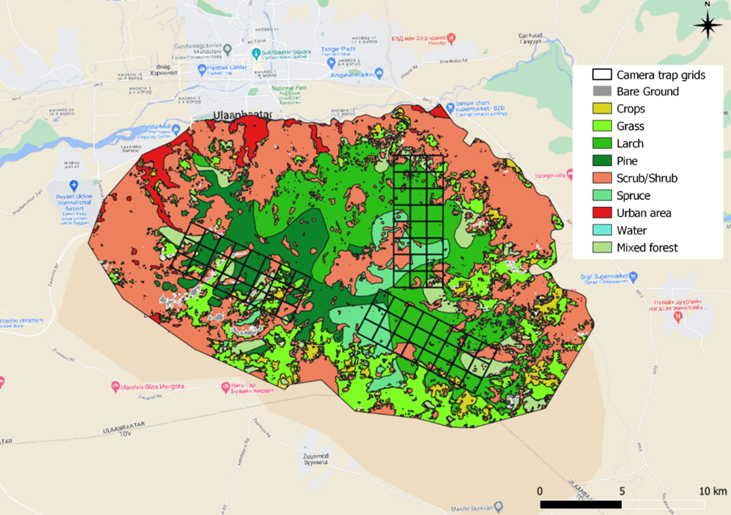
Photo 1
My responsibilities while working in Mongolia were to design and implement a camera trap survey inside the boundary of the Bogd Khan Mt. Strictly Protected Area to capture photos and video of wildlife on the mountain (Photo 1). We did this in cooperation with the mammal lab from the Mongolian Academy of Sciences (MAS). The MAS, who are the country's biologists and scientists for the nation of Mongolia, are similar to the U.S. Geological Survey (USGS) here in the states (Photo 2). The second part of the project involved interviewing locals who lived in proximity to Bogd Khan Mt. We asked questions regarding wolves and sought to learn where wolves were located, if the herders had any conflicts with wolves in the past in the form of depredations, and if they had observed feral dogs (Photo 3).
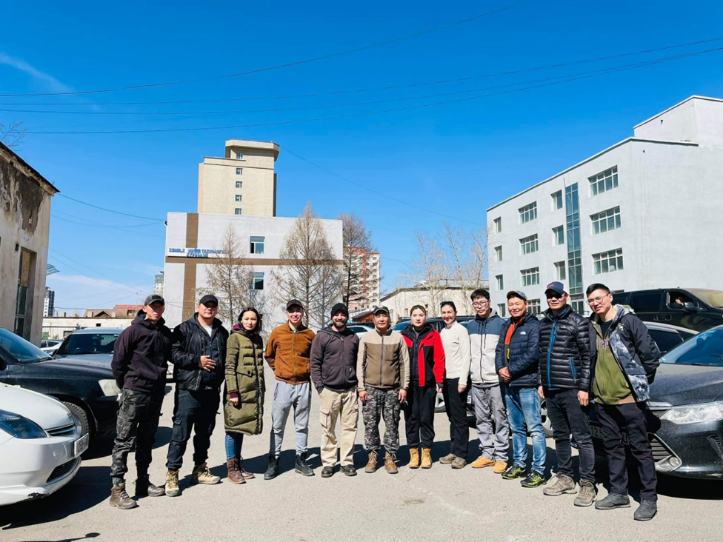
I am looking into the interaction of wolves and feral dogs in the Bogd Khan Mt. Strictly Protected Area because this place is of cultural importance and was designated a United Nations Educational, Scientific and Cultural Organization (UNESCO) Biosphere Reserve in 1997. Bogd Khan Mt. has always been a place of significance in Mongolian culture and had restrictive laws in place dating back to the 12th century, making it one of the oldest protected areas in the world. The significance of wanting to study here is a bit of an urgent need. Since the democratic revolution of 1990 the capital city, Ulaanbaatar, has increased in size from a population of 650,000 people to over 1.5 million people today. This increase in human growth and urban development has caused conflict with the Bogd Khan Mt. protected area, by habitat reduction and the release of free-ranging dogs into the protected area that kill wildlife and threaten wolves through competition (Photos 4 and 5).
Photo 2
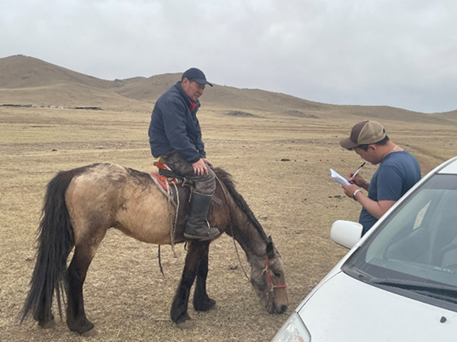
The benefit of my work will hopefully recognize where wolves and free-ranging dogs are co-occurring. This will help document where dog control efforts need to take place. Currently, 150 to 200 dogs are killed annually during the month of October. These recommendations, where we document wolves and dogs in the Bogd Khan Mt. protected area, will be given to the protected area administration to mitigate the expansion of the free-ranging dog populations. Due to the extra data we can gather with trail cameras we can also confirm and run occupancy modeling for other wildlife species as well to determine the state of these populations. These efforts are already paying off as we have met recently with the International Conservation Caucus Foundation (ICCF) who is working with U.S. partners to establish and maintain trails within the Bogd Khan Mt. area.
Photo 3
The collaboration between the Koprowski lab, through the University of Wyoming, and MAS is a powerful opportunity to not only pioneer wildlife research in a little-understood area but has also led to Mongolian empowerment with scientists and biologists becoming primary authors on several publications. Oftentimes, foreign scientists travel to Mongolia and conduct research, then take all the data and publish it with just one Mongolian person included in the publication. This is not the case for Wyoming’s Koprowski lab, where we will have several opportunities to co-author with various biologists from Mongolia. This will elevate their standing on the world scale in the wildlife field.
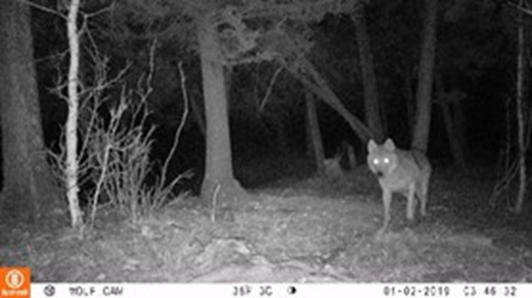
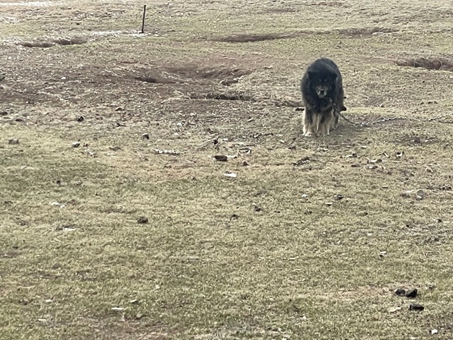
Photo 4 Photo 5
Lastly, I wanted to touch briefly on my experience with the people and conversations I had with my Mongolian colleagues. Many of my colleagues were born shortly before or after the democratic revolution of 1990. They had not experienced the Soviet era of their country's government. Many of these younger people told me at some point in our work that everyone in Mongolia has at least one family member who had gone missing or disappeared during this oppressive time in history. Some had even told me stories of how family members turned in other family members to government officials for crimes against the state. Rules were strict during this time. Cultural artifacts in museums, like bows and arrows, were destroyed. Even simply mentioning the name of Genghis Khan was forbidden. Practicing Buddhism was outlawed and over 1,500 Buddhist monks were rounded up and sent to gulags where they died. Population “purges” led to the killing of 18,000 Lamas and civilians, and Choibalsan’s repressive dictatorship kept an iron hold on Mongolia’s people for many years.
As I mentioned previously, I have an interest in history and culture as well as my wildlife work. I’m interested and have been involved in shooting archery my whole life. Starting in 2018, a few people wanted to revive horse archery in Mongolia as a way of restoring a cultural treasure. They traveled to inner Mongolia to study and research the making of horse bows and arrows and started their archery academy called Namnaa Horse Archery. I felt very fortunate to find this academy in the city of Ulaanbaatar, and was able to participate with members of the school as they practiced. Everyone in Mongolia knows the history of how their people conquered the world with horses and bows and arrows, but now they have a facility dedicated to the lost practice (Video).”
Jeff Dolphin's horse archery video
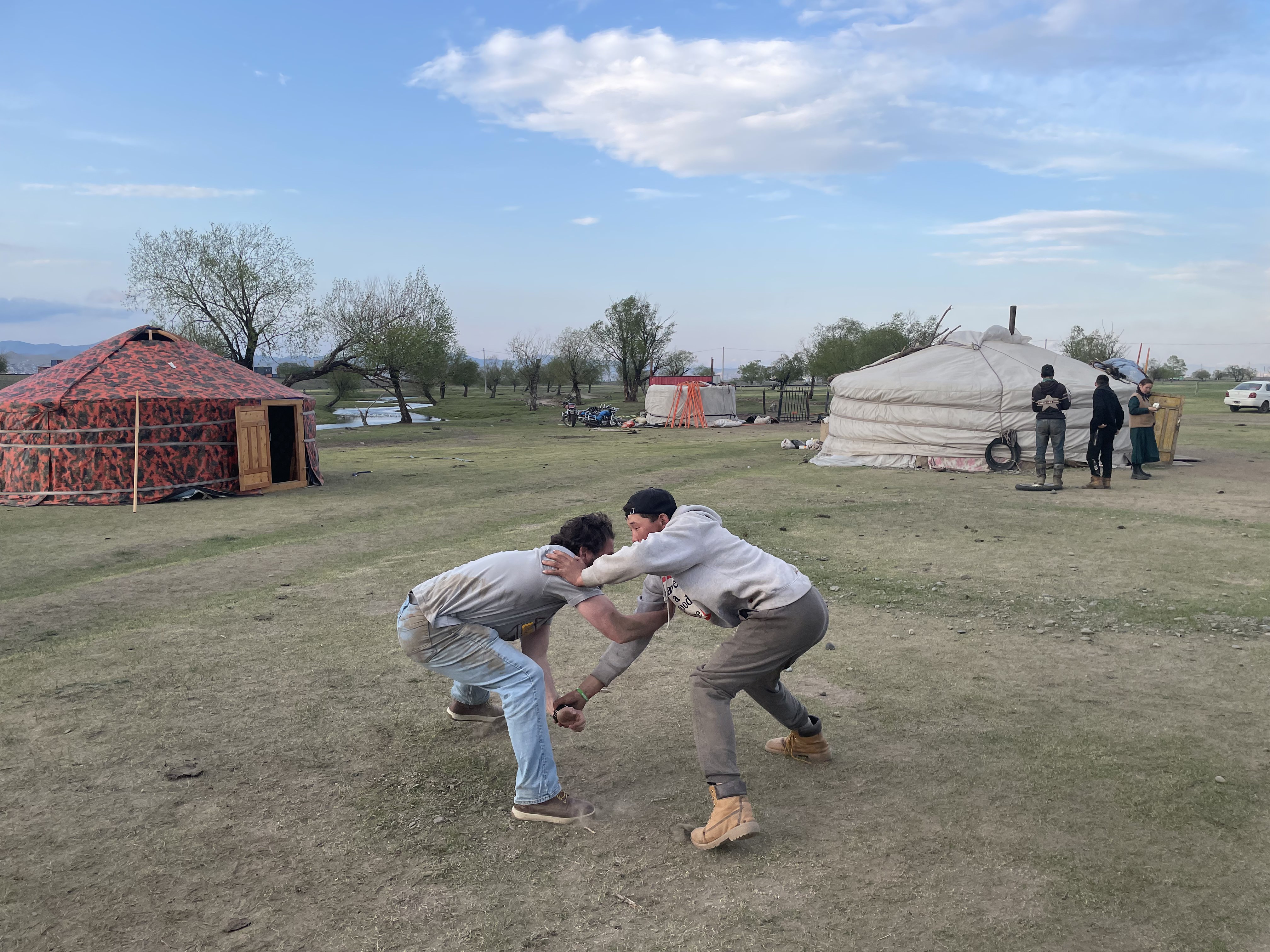
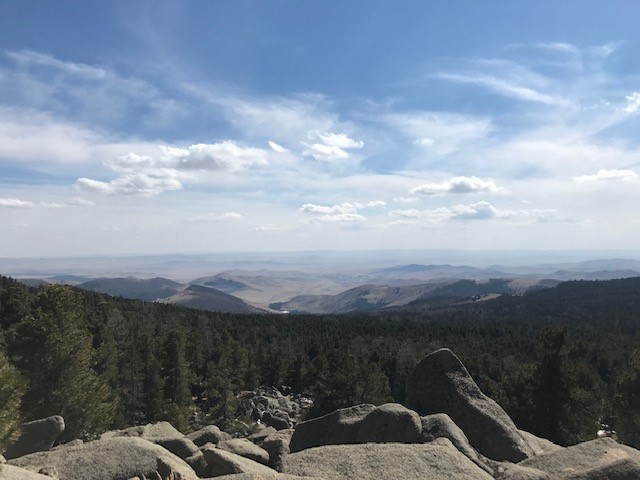

Jeff Dolphin’s story has been edited for grammar and clarity. All media credit goes to Jeff Dolphin.
Contact Us





Haub School of Environment and Natural Resources
Bim Kendall House
804 E Fremont St
Laramie, WY 82072
Phone: (307) 766-5080
Fax: (307) 766-5099
Email: haub.school@uwyo.edu
